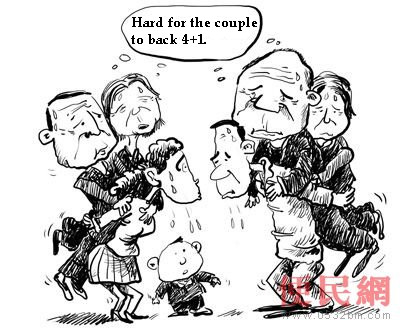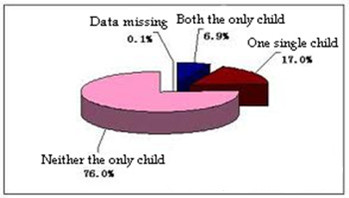"Barrel-shaped" population structure
China is going through a transition period which has been characterized by a demographic dividend, involving a hiking rate of economic growth due to a rising share of middle-aged laborers in relation to the whole population, with small numbers of youth and elderly.
According to Zhai, "The end of such population benefits does not necessarily result in an economic depression, but is likely to serve as the impetus for economic transformation, industrial upgrading, labor efficiency promotion, labor rights defense and, in essence, social harmonization."
The former logic of correlating economic strength with population size must shift, said Zhai. Now, the focus should be on creating a well-tended and cultivated population to secure the country's future potential.
Zhai cited the U.S. as an example, which has a population of only some 300 million people, but has ruled over the world for decades. A total of 770 million laborers in developed Western countries have created annual wealth of $36 trillion, yet in China, 930 million laborers contributed only $6 trillion in 2010. This perfectly illustrates the productivity gap between a well-educated working group in the developed West and a cultivated labor force in the premature Chinese economy and society, said Zhai.
The problem of education has also spurred debate over reverse elimination (a lower rate of well-educated people versus a higher rate of poorly-cultivated people). In China, the two groups are roughly divided by the prosperous degree of the region, or simply between city and countryside. Rural economies are relatively weak, driving educated and skilled people to more diversified and developed industries in the cities.
Despite that, Dr. Zhai attributes the curbing of reverse elimination to greater sacrifices by the rural population over the decades.
On average, each rural family has downsized from 6-7 children before the population control policies to 1.5 today, compared to the drop in urban families from 3 to 1. It is now no longer even necessary to monitor rural family sizes to ensure that education resources are sufficiently planned and allocated, said Zhai.
Fundamentally, control of reverse elimination relies on equal redistribution of public resources and more means of taking care of the countryside. In other words, it is high time to diminish the gap between urban and rural areas rather than encourage births in cities.
Dr. Zhai raised the ideal "barrel-shaped" population model for China in the coming 20 to 50 years. At the moment, the demographic structure is shaped like an inverted pyramid, a result of the birth booms during the 1950s and 1960s.
In 2040, when the generations from the 1950s and 1960s reach their brink of life – and when the Chinese elderly population is expected to approach the peak of 400 million – the trend will naturally reverse.
In Europe, the straight "barrel" population structure, also known as "stable population," is more sustainable in both demographic growth and industrial development. In its application to China, which holds such a large population, the best case is that the total number drops slightly year by year in a "slow minus growth" pattern, added Zhai.



















